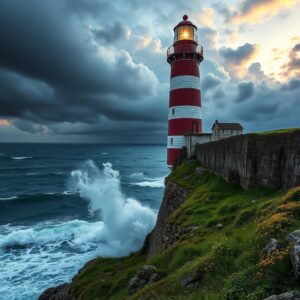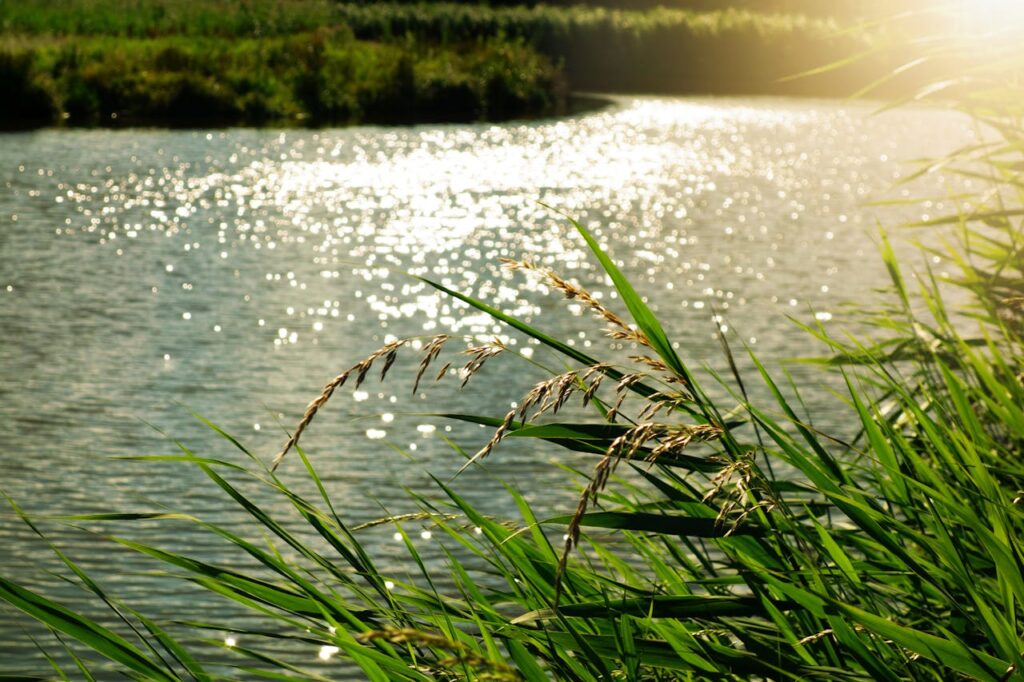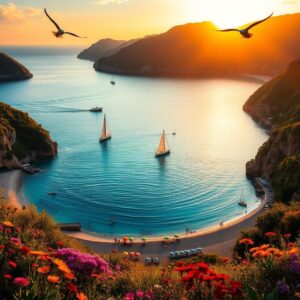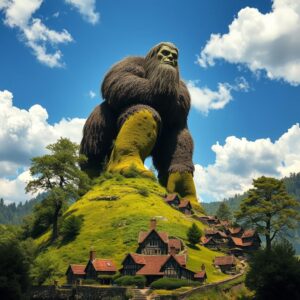
Explore & Play
Discover interesting topics and solve the accompanying crossword puzzle.
River Crossword | Explore Iconic Rivers
Table of Contents
Welcome to Our River Adventure!
Before diving into the depths of our article on iconic rivers, we invite you to test your knowledge with our engaging river crossword. It’s a fun way to familiarize yourself with the world’s greatest waterways. If you’re new to the topic or want a deeper understanding, feel free to read through the article first to gain some background and then challenge yourself with the crossword. Whether you start with the crossword or the article, we hope you enjoy exploring the fascinating world of rivers!
River Crossword
You can either fill in the crossword puzzle directly on this page or click the button in the bottom right corner to print it for free.

The Longest and Most Iconic Rivers: A Tour of the World’s Water Giants
From the Amazon’s vast expanse to the ancient flow of the Nile, the world’s rivers have carved paths that shaped civilizations, fostered biodiversity, and inspired countless stories. These majestic waterways serve as lifelines, connecting people and cultures across continents. In this article, we’ll explore the world’s longest and most iconic rivers, revealing the historical, cultural, and ecological significance of each. Along the way, we’ll also discover how these rivers inspire learning through crossword puzzles, making geography fun and engaging.
The Role of Rivers in Human Civilization
Rivers have always been the lifeblood of human societies, providing water, food, transport, and inspiration throughout history. They were the cradle of ancient civilizations, offering a steady supply of fresh water, fertile land, and a means for trade and communication.
The Nile, for example, was crucial to the rise of ancient Egypt. Its predictable flooding allowed for successful agriculture, feeding a civilization that built some of the most iconic structures in human history. Similarly, the Ganges in India has long been revered not just as a source of life but as a sacred river, worshipped by millions for its spiritual significance.
Other rivers like the Tigris and Euphrates defined the region known as Mesopotamia, often called the “Cradle of Civilization.” Together, these rivers supported some of the world’s earliest urban centers, which thrived due to their abundant resources.
Transitioning from the past to the present, rivers continue to play an essential role in supporting large urban centers, acting as vital arteries for commerce and trade.
South America’s Giants: The Amazon and Orinoco
South America is home to some of the most awe-inspiring rivers, including the mighty Amazon, which holds more water than the next seven largest rivers combined. Stretching across several countries, the Amazon supports the world’s largest tropical rainforest. This river is not just a geographical wonder; it is an ecological powerhouse, housing a diverse array of species found nowhere else on Earth.
Flowing through Venezuela and Colombia, the Orinoco is another major river that defines the landscape of northern South America. Known for its extensive delta and rich biodiversity, the Orinoco supports numerous ecosystems, including vast wetlands and tropical rainforests.
Both the Amazon and Orinoco are more than just natural wonders—they are integral to the culture and livelihoods of the communities that live along their banks.
Africa’s Lifelines: Nile, Congo, and Zambezi
Africa’s great rivers are crucial to the continent’s geography and culture, with each flowing through diverse landscapes that tell their own unique stories. The Nile, stretching over 4,100 miles, is the longest river in the world. It traverses eleven countries, including Egypt and Sudan, bringing life to arid regions that would otherwise be deserts.
The Congo River, winding through central Africa, is the second longest river on the continent. It is known for its deep basin, thick rainforests, and tumultuous rapids. The river’s flow is so powerful that it provides immense hydroelectric potential, making it vital to the region’s future energy needs.
Meanwhile, the Zambezi is famous for its stunning natural wonder, Victoria Falls. As the river cascades over a cliff, it creates one of the largest and most spectacular waterfalls in the world, attracting tourists and adventure seekers from around the globe.
The Great Waterways of Asia: Yangtze, Ganges, and Mekong
Asia boasts some of the longest and most culturally significant rivers, flowing through countries rich in history. The Yangtze is the longest river in Asia and the third longest in the world. Running through China, it has been essential for agriculture, transport, and trade for thousands of years. The river’s Three Gorges Dam is a modern marvel of engineering, showcasing the Yangtze’s continued importance.
The Ganges is not just a river but a sacred entity revered by millions. Flowing through India and Bangladesh, the Ganges is central to Hindu rituals, agriculture, and daily life. Despite facing challenges like pollution, it remains a symbol of spiritual purity.
The Mekong, which winds through Southeast Asia, is another river of immense cultural and economic importance. From Myanmar to Vietnam, the Mekong supports millions of people who rely on it for fishing, agriculture, and transport.
Europe’s Majestic Rivers: Danube, Rhine, and Volga
Europe’s rivers have played a pivotal role in trade, culture, and politics, with the Danube and Rhine being prime examples. The Danube flows through ten countries, making it the most international river in the world. From Germany to Romania, it serves as a vital trade route and a source of cultural exchange.
The Rhine, flowing through Switzerland, Germany, and the Netherlands, has been central to European history, known for its castles, vineyards, and storied past. It remains one of the most important rivers for trade and transport in Europe.
The Volga, the longest river in Europe, is often called the lifeblood of Russia. It supports numerous cities, including Volgograd and Kazan, and is crucial to the region’s economy, particularly for shipping and fishing.
North America’s Mighty Flows: Mississippi, Colorado, and Hudson
North America’s rivers are as diverse as its landscapes, from the winding Mississippi to the dramatic Colorado. The Mississippi River, stretching from Minnesota to the Gulf of Mexico, has been a symbol of American history and culture. It played a critical role in westward expansion and continues to be a key commercial waterway.
The Colorado River is best known for carving the Grand Canyon, one of the most breathtaking natural wonders on the planet. Its waters are crucial for the arid southwestern United States, supplying water to millions of people.
In the northeastern U.S., the Hudson River is both a historic and scenic landmark. Flowing through New York, it was named after the explorer Henry Hudson and has been immortalized in art and literature.
Iconic Waterways of the Iberian Peninsula: Tagus and Guadalquivir
The Iberian Peninsula is home to rivers that have defined Spanish and Portuguese history and culture. The Tagus is the longest river in the Iberian Peninsula, flowing through Spain and Portugal before emptying into the Atlantic Ocean. It has been a crucial waterway since ancient times, providing resources and serving as a natural barrier.
The Guadiana, partially forming the border between Spain and Portugal, is known for its picturesque landscapes and historical significance. Both rivers continue to play vital roles in agriculture, water supply, and tourism in the region.
Russia’s Frozen Giants: Lena, Amur, and Ob
Russia’s rivers stretch across vast, frozen landscapes, flowing through regions rich in history and natural resources. The Lena River is a major Siberian waterway, known for its dramatic ice flows and its path through one of the world’s coldest inhabited regions.
The Amur forms part of the border between Russia and China, flowing through a culturally diverse area. It is vital for transport and trade between the two nations.
Meanwhile, the Ob River is one of Siberia’s great rivers, flowing through Russia’s vast western plains. It is a key resource for the communities and industries that rely on its waters.
Rivers of the Middle East: Tigris, Euphrates, and Jordan
The rivers of the Middle East are not just geographical landmarks but the cradles of some of the world’s oldest civilizations. The Tigris and Euphrates have supported agriculture and settlement for millennia, often cited together in ancient texts as defining the fertile crescent of Mesopotamia.
The Jordan River, smaller in size but rich in historical and religious significance, flows through a region steeped in history. It is a crucial water source for Israel, Jordan, and Palestine.
The Iconic Waterways of the United Kingdom: Thames and Severn
The UK’s rivers have long been symbols of cultural heritage, with the Thames flowing at the heart of London. It has witnessed the growth of the British capital over centuries and continues to be a major landmark, celebrated in literature, art, and tourism.
The Severn, the longest river in the UK, has been vital for trade and navigation since ancient times. Its tidal range is one of the highest in the world, making it a fascinating river both ecologically and historically.
Rivers in Art, Culture, and Literature
From poetry to paintings, rivers have been a timeless source of inspiration for artists and writers alike. The Seine in Paris has been immortalized by countless artists, while the Rhine has inspired folklore and legends. The Hudson River School of painters captured the beauty of American landscapes, highlighting rivers as central themes.
These rivers don’t just flow through land; they flow through the human imagination, appearing in works of art, music, and literature that continue to captivate us.
Conclusion: Rivers—Nature’s Enduring Legacy
Rivers have always been more than just waterways—they are lifelines, symbols of cultural identity, and sources of inspiration that continue to flow through time. From ancient civilizations to modern cities, these rivers connect us to our past, sustain our present, and shape our future. Whether through art, literature, or fun crossword puzzles, rivers invite us to explore the world in all its complexity and beauty. Let’s continue to celebrate and protect these enduring giants of nature.
Trying your hand at a river crossword puzzle could be a fun way to dive deeper into these iconic waterways, making learning about them interactive and enjoyable.
Share to...
I hope you enjoy the content.
Want to receive our daily crossword puzzle or article? Subscribe!
You may also be interested in
Share to…
Want to receive our daily crossword puzzle?
-
Jigsaw Puzzles
Whimsical Hamster Jigsaw Puzzle in Watercolor Style 250 | 300 | 500 Brikker
kr 348,00 – kr 439,00Price range: kr 348,00 through kr 439,00 Select options This product has multiple variants. The options may be chosen on the product page -
Jigsaw Puzzles
Chinese Zodiac Serpent Watercolor Jigsaw Puzzle 250 | 300 | 500 Pieces
kr 348,00 – kr 439,00Price range: kr 348,00 through kr 439,00 Select options This product has multiple variants. The options may be chosen on the product page -
Jigsaw Puzzles
Elegant Pig Zodiac Watercolor Jigsaw Puzzle 250 | 300 | 500 Brikker
kr 348,00 – kr 439,00Price range: kr 348,00 through kr 439,00 Select options This product has multiple variants. The options may be chosen on the product page

















